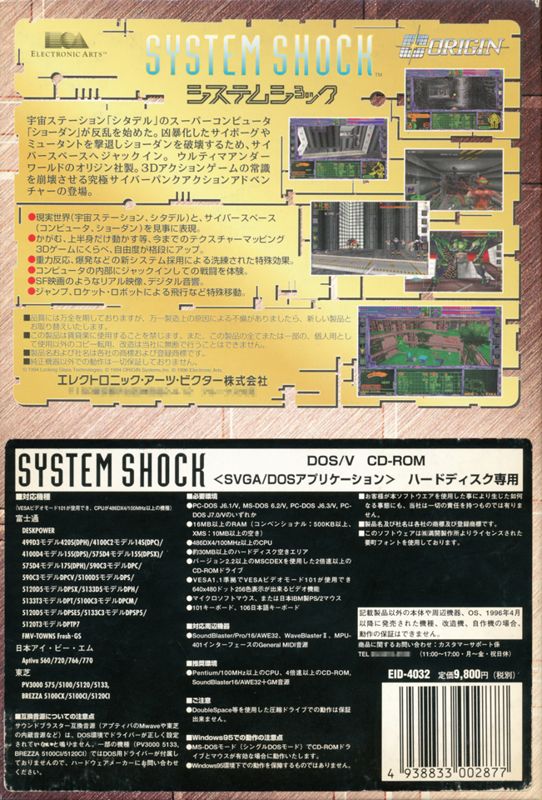The Legacy of Immersive Sims
The Legacy of Immersive Sims: BioShock, Prey, and Their Ancestry
When we think about the most influential games of the past few decades, the BioShock series often stands out as a masterpiece of storytelling, atmosphere, and gameplay. But what makes BioShock truly special is how it seamlessly weaves together elements from its immersive sim predecessors—games like System Shock and Ultima Underworld. These games laid the groundwork for what would become one of the most iconic franchises in gaming history. However, the conversation wouldn’t be complete without also acknowledging the original 2006 Prey, which added its own unique twist to this lineage.
The Vita-Chambers and Spirit Walks: A Resurrection of Ideas
One of the most intriguing aspects of the BioShock series is its resurrection mechanic, facilitated by the Vita-Chambers. These devices, scattered throughout the world of Rapture, allow players to be resurrected upon death, creating a seamless gameplay experience that doesn’t break the immersion. This idea wasn’t new—it was a direct nod to the past.


In System Shock, a spiritual predecessor to BioShock, players could activate Cyberspace Terminals that would bring them back to life if they died. This wasn’t just a gameplay mechanic; it was an integral part of the game’s world and narrative, much like the Vita-Chambers in BioShock. Similarly, in Ultima Underworld, the use of the Silver Seed for resurrection was deeply embedded in the game’s lore, creating a continuity between player actions and the story.
The connection between these mechanics in BioShock, System Shock, Ultima Underworld, and Prey shows how these games are more than just shooters or RPGs with deep narratives; they are continuations of a legacy that began with these earlier immersive sims. Each game took these ideas and refined them, integrating them into their worlds in ways that felt natural and purposeful.
The Evolution of Immersive Sims
Ultima Underworld is often credited as the first true immersive sim, a game that allowed players unprecedented freedom to explore, interact with the environment, and make choices that affected the world around them. This philosophy carried over into System Shock, the original Prey, and eventually into BioShock. The sense of immersion, the blending of gameplay mechanics with narrative, and the feeling that the world was a living, breathing place—all of these elements were hallmarks of these games.
As we move forward in gaming, it’s clear that deep integration between lore and gameplay mechanics has become rarer. However, there are still modern titles that carry the torch of the immersive sim. Games like S.T.A.L.K.E.R., Prey (Arkane Studios’ 2017 version), and the entire Arkane Studios catalog, from Arx Fatalis to Dishonored, keep this tradition alive. These games create worlds where every mechanic, every piece of lore, is interconnected, providing players with a truly immersive experience.
The Spiritual Successors: BioShock and Prey’s Place in History
When playing BioShock and reflecting on the original Prey, it’s impossible not to feel the echoes of their predecessors. The design, mechanics, and storytelling in these games are all deeply rooted in the traditions of the immersive sim genre. Both BioShock and Prey are often seen as spiritual successors to System Shock, Ultima Underworld, and each other—not just because of the gameplay mechanics but because of the philosophy that drives them.
The resurrection mechanics in both BioShock and the original Prey are more than just ways to keep the player in the game. They’re reflections of the world’s deeper themes—whether it’s the twisted science of Rapture or the spiritual journey of Tommy in Prey. These mechanics are integral to the narrative, making death and rebirth not just a gameplay feature but a part of the player’s experience of the story.
As we look forward to the remaster of System Shock and revisit classics like Prey, it’s worth remembering how these games have shaped the landscape of modern gaming. BioShock and Prey stand as testaments to the power of immersive sims, a genre that continues to influence and inspire game developers today.
So, whether you’re stepping into the shoes of a Big Daddy, exploring the halls of Talos I, or walking the spirit path with Tommy, remember that you’re part of a legacy—a legacy of games that don’t just tell a story, but make you live it.


Comments
Post a Comment